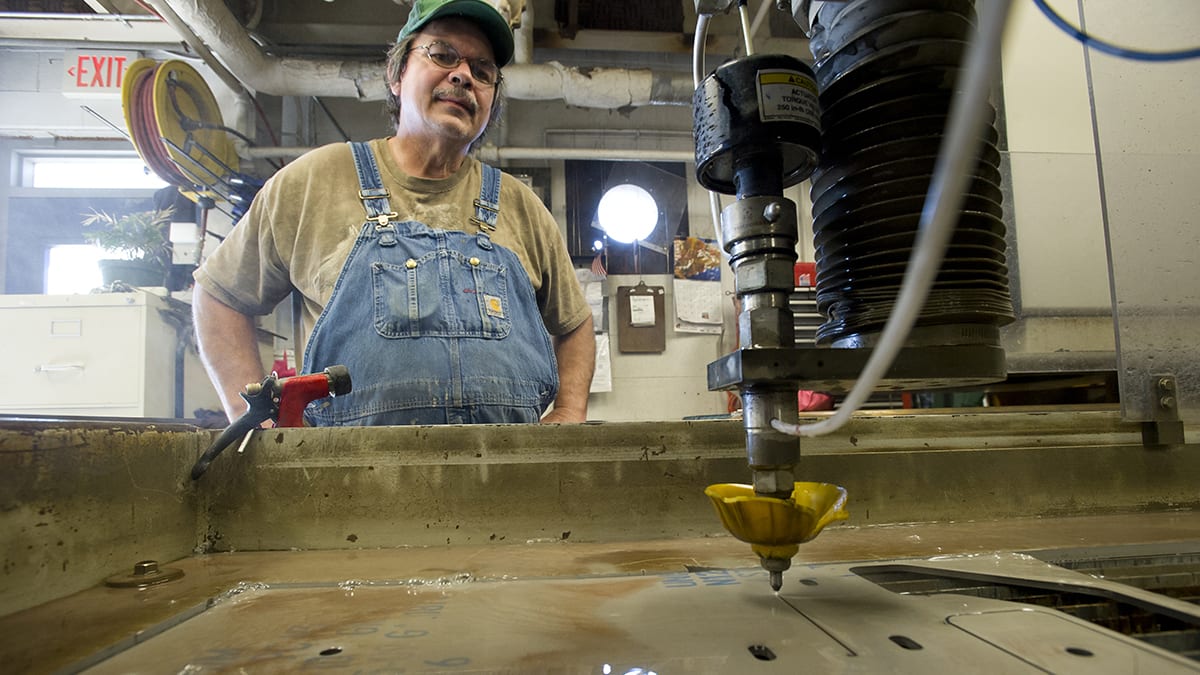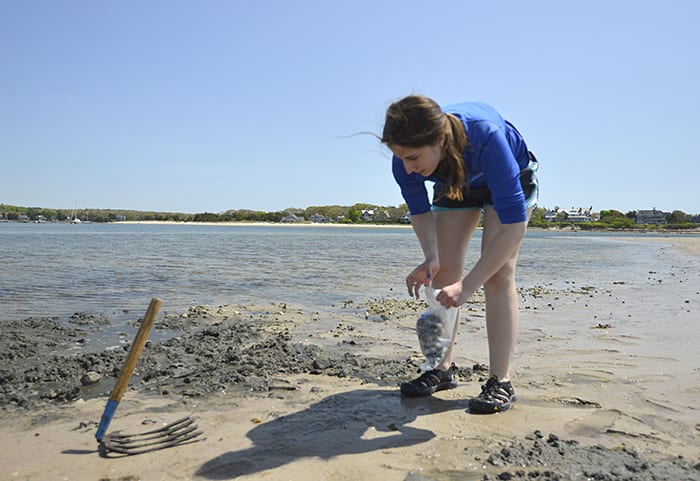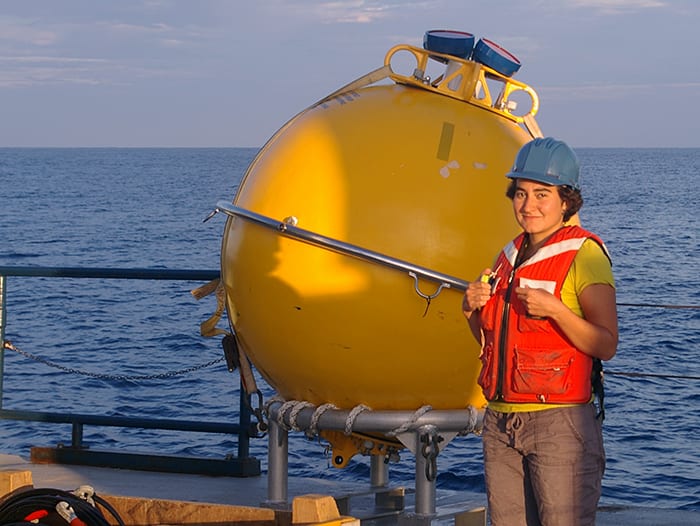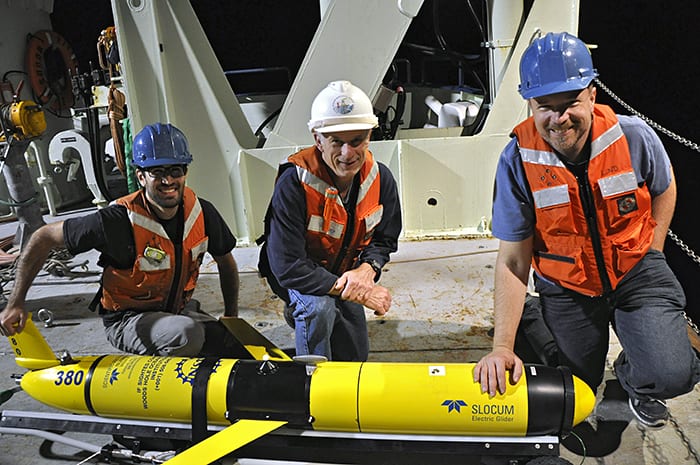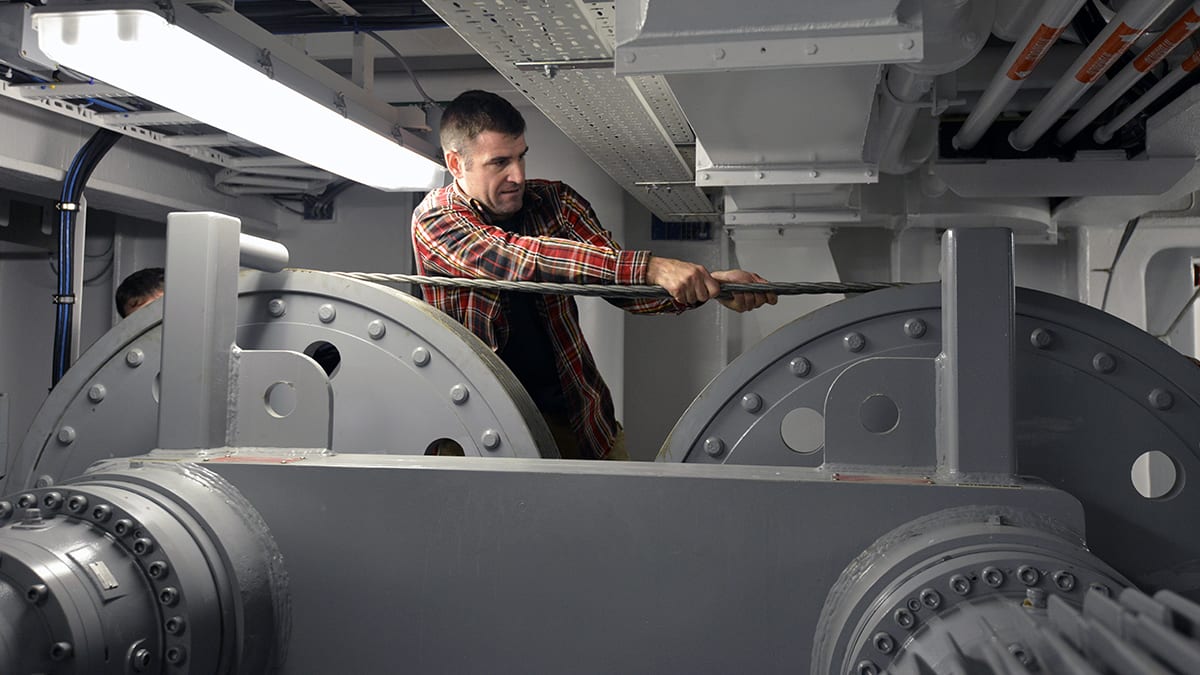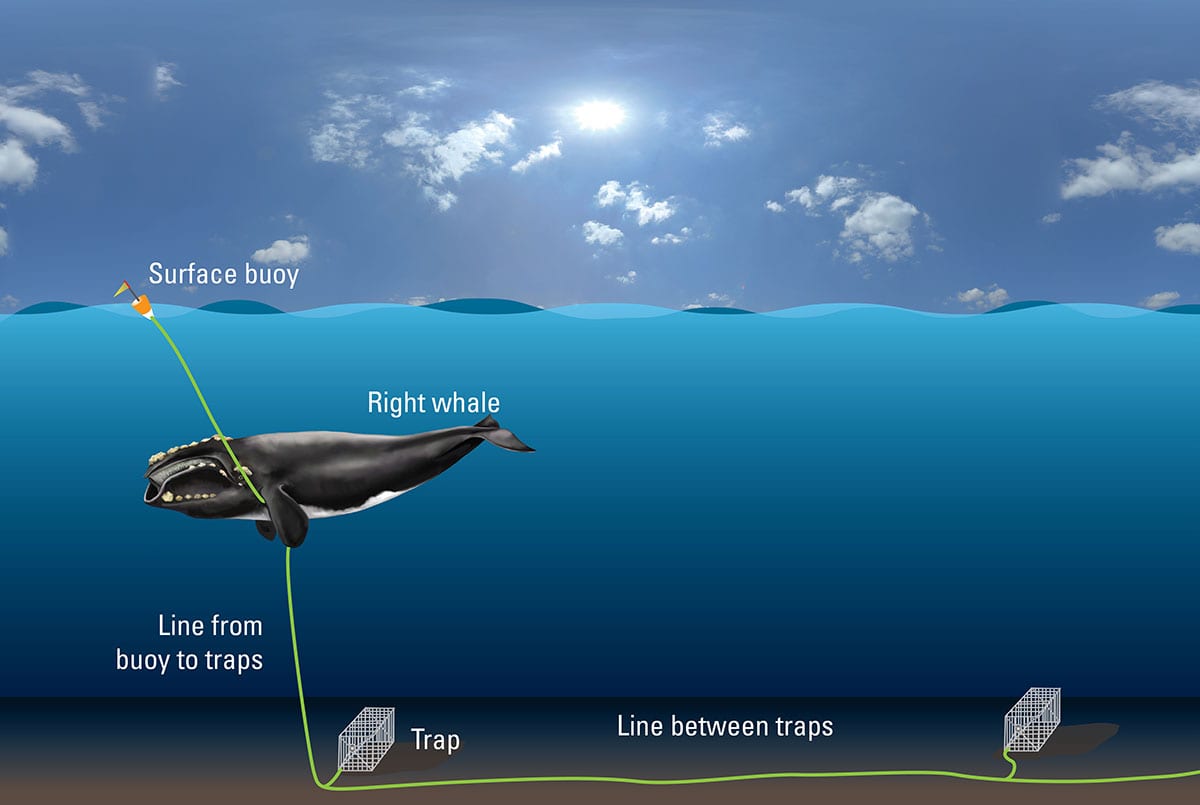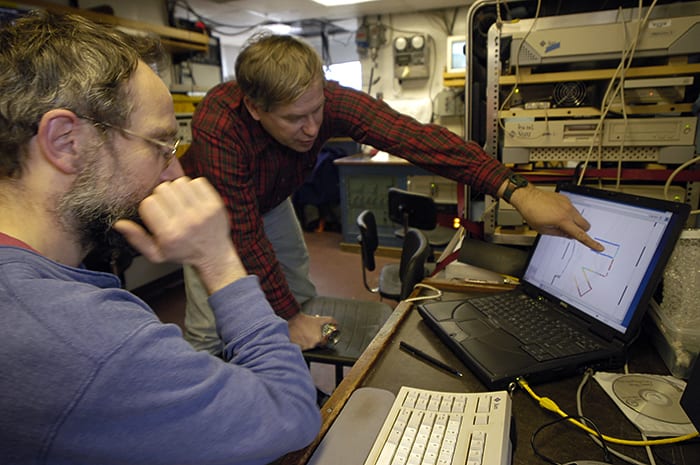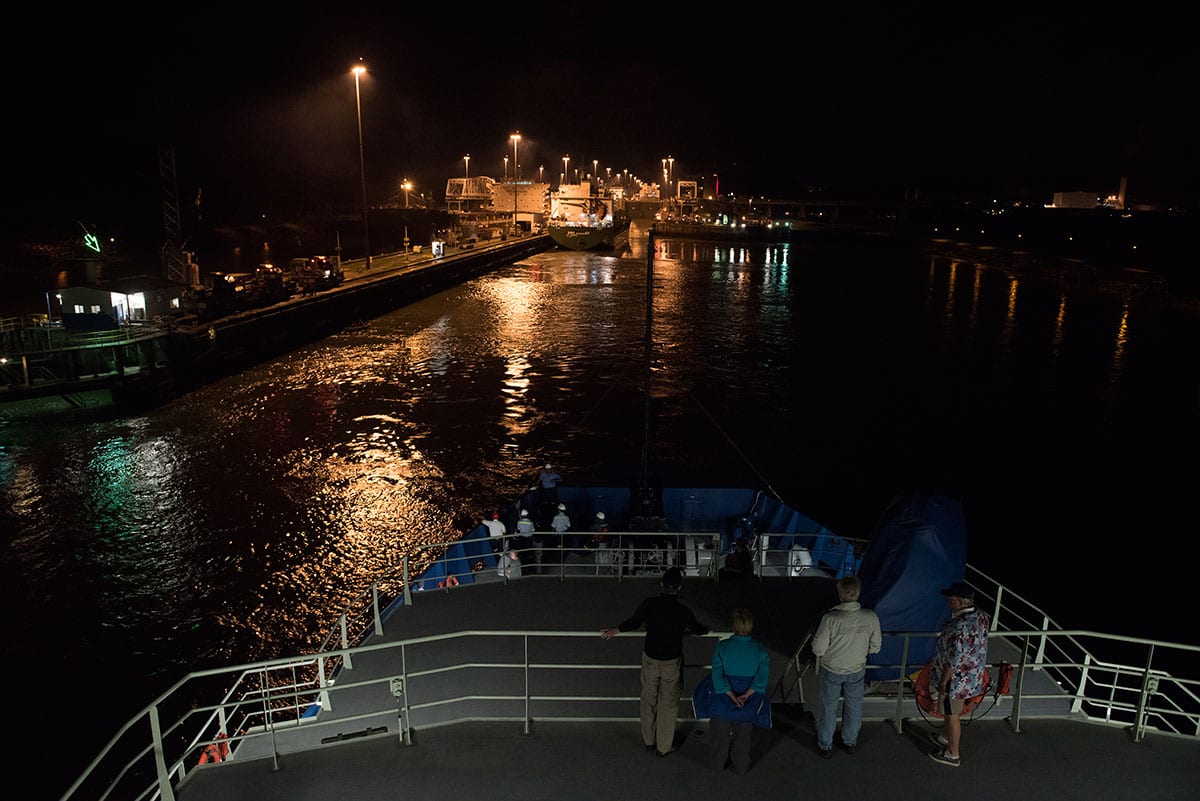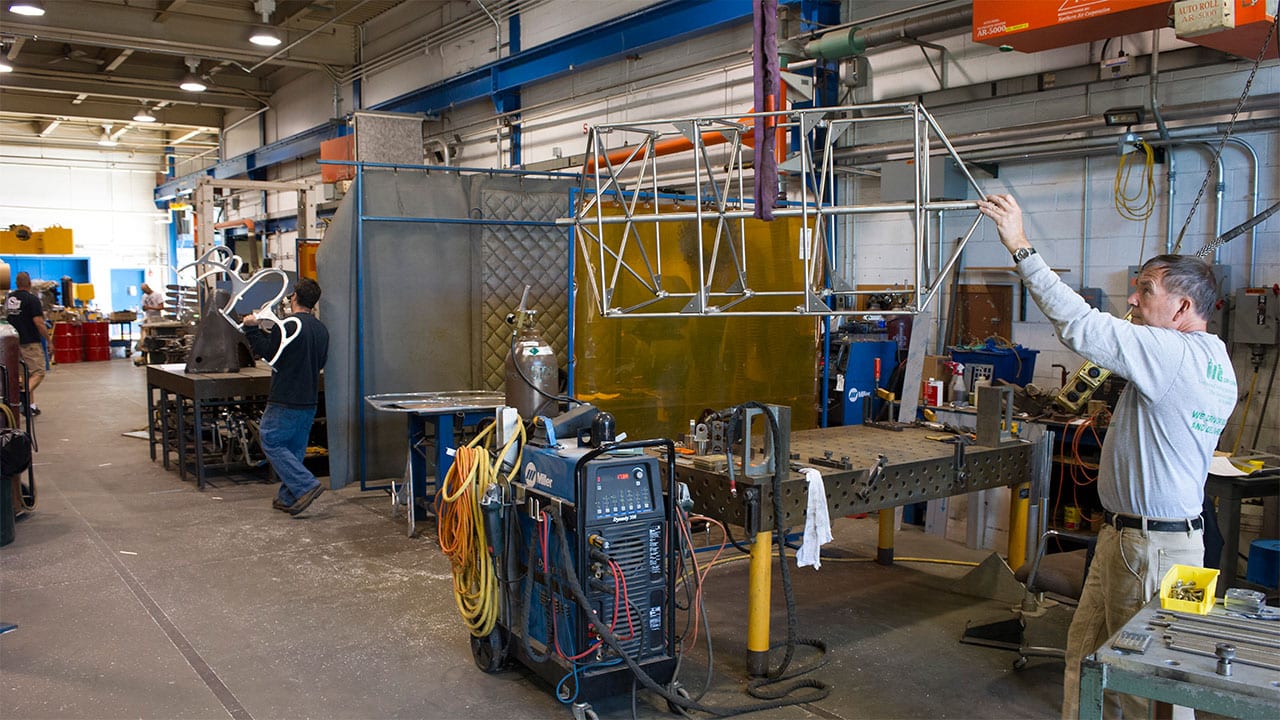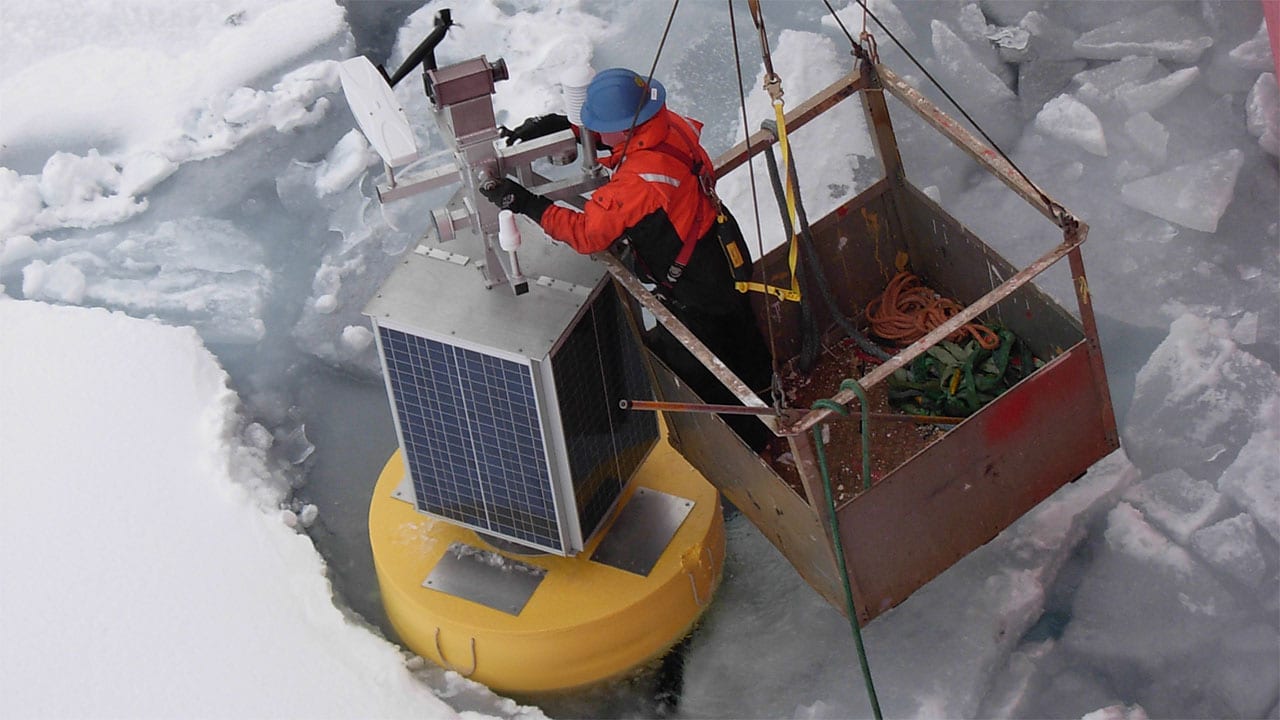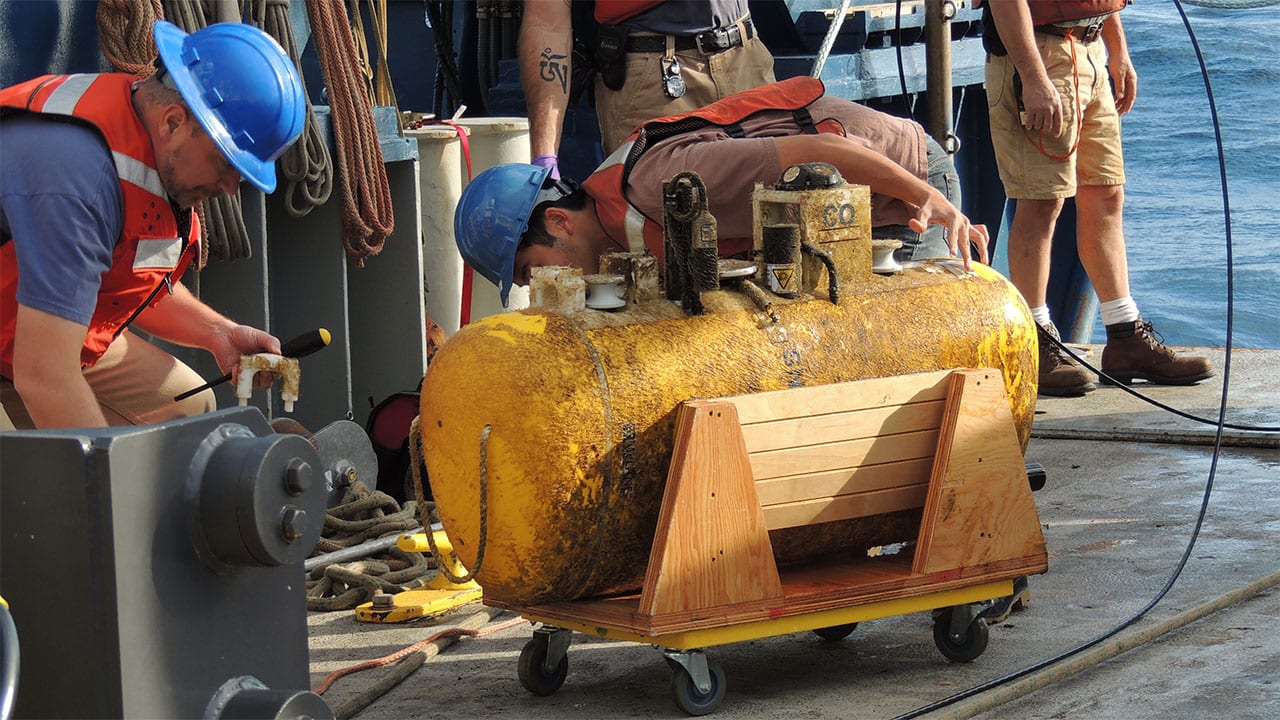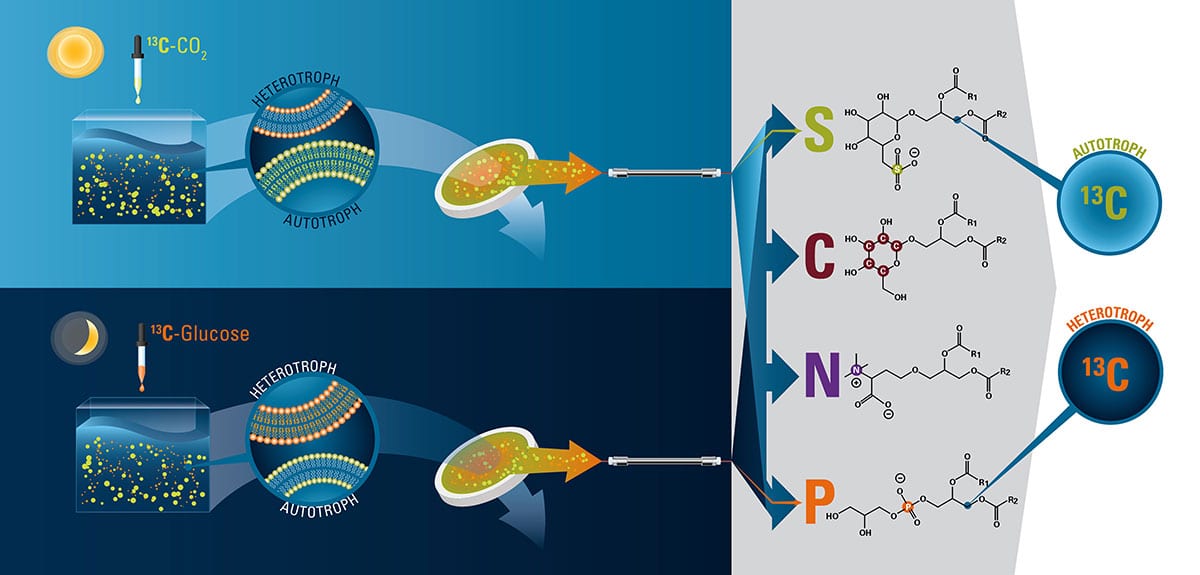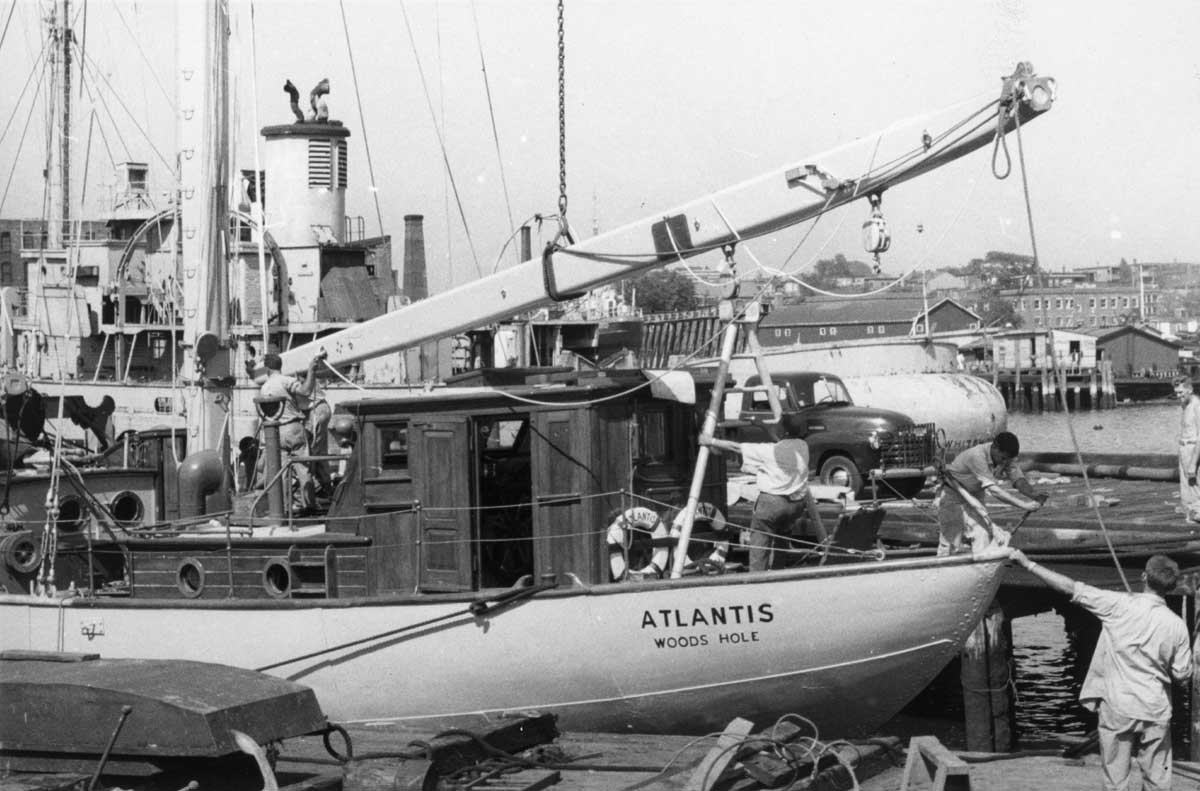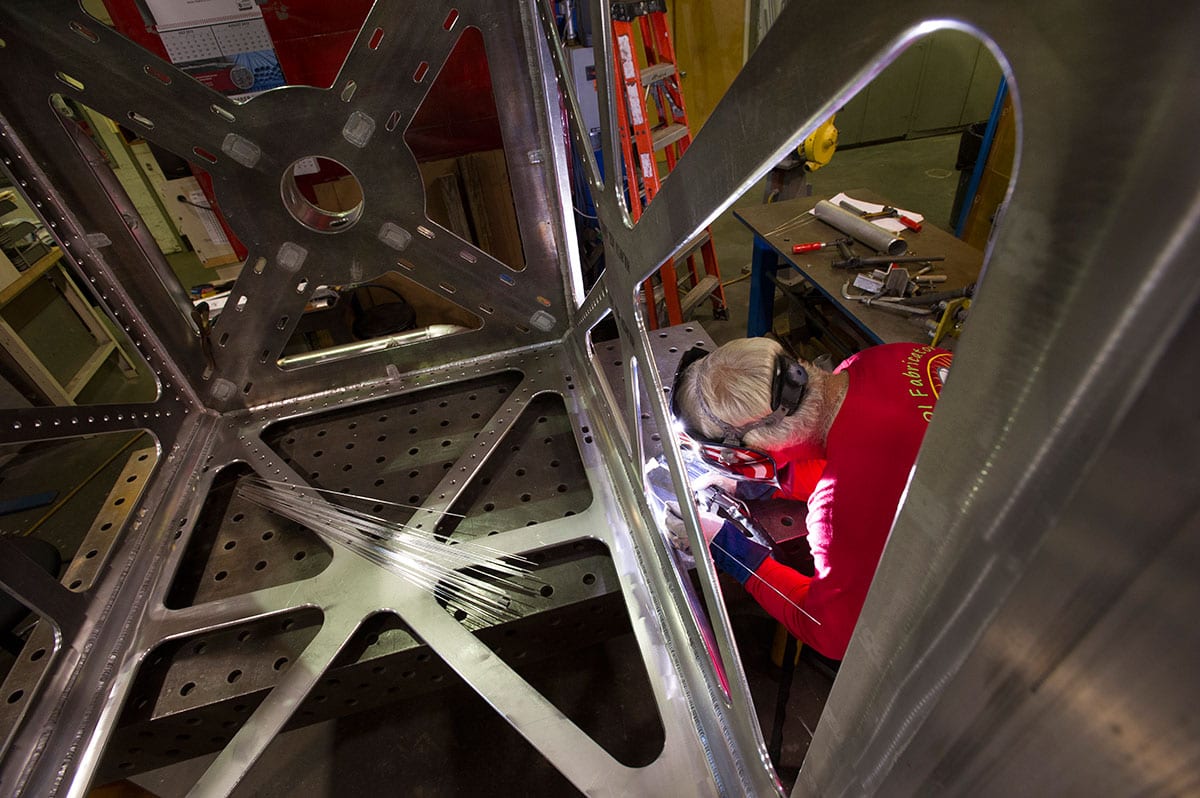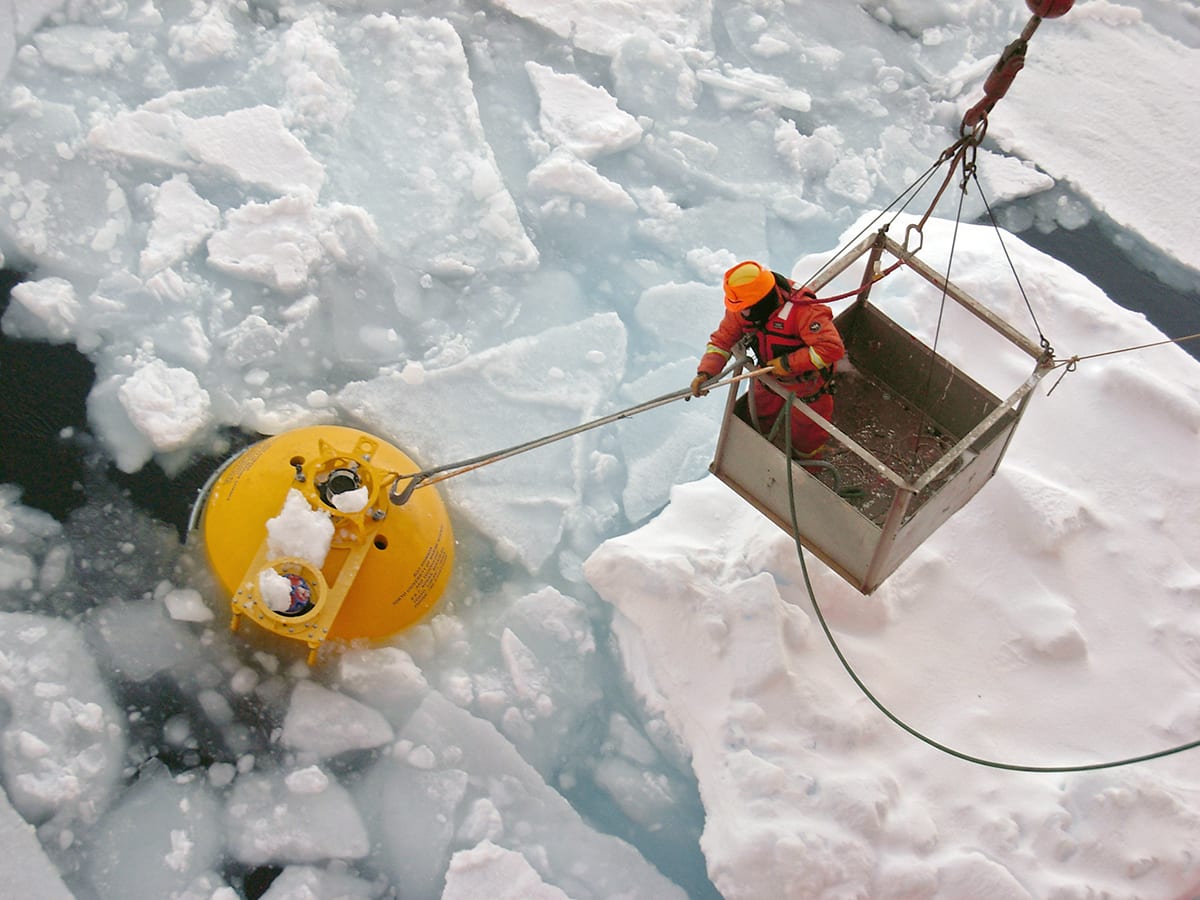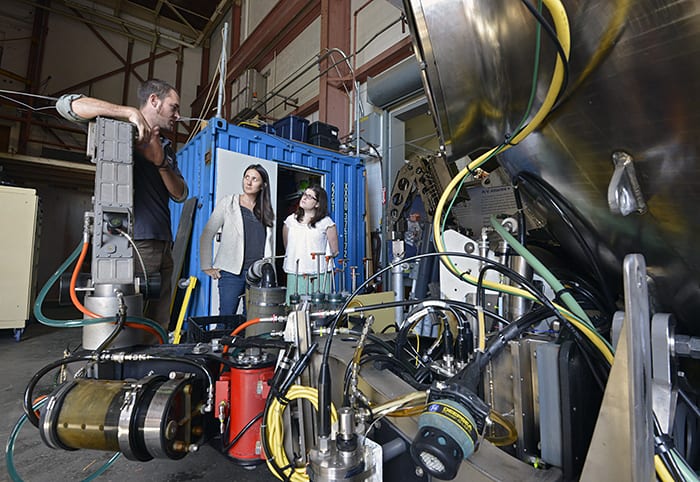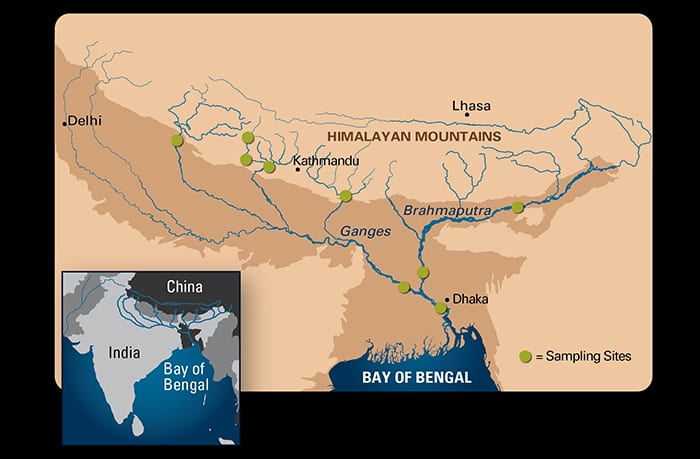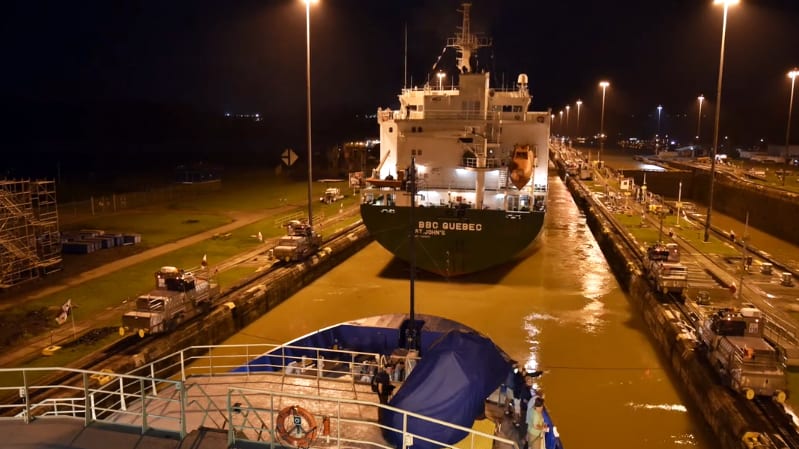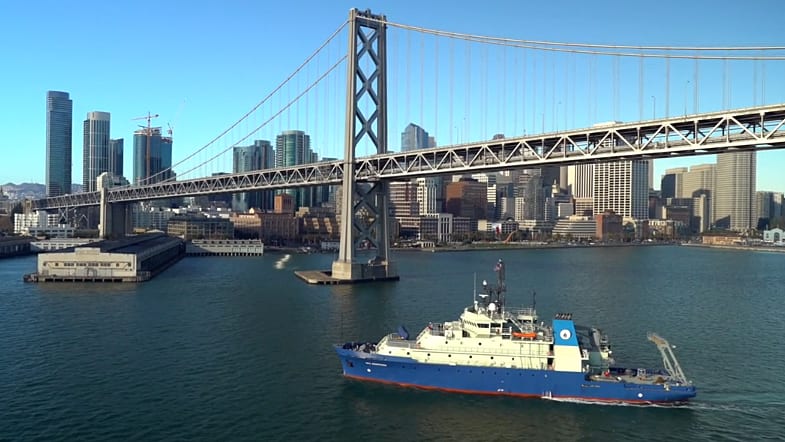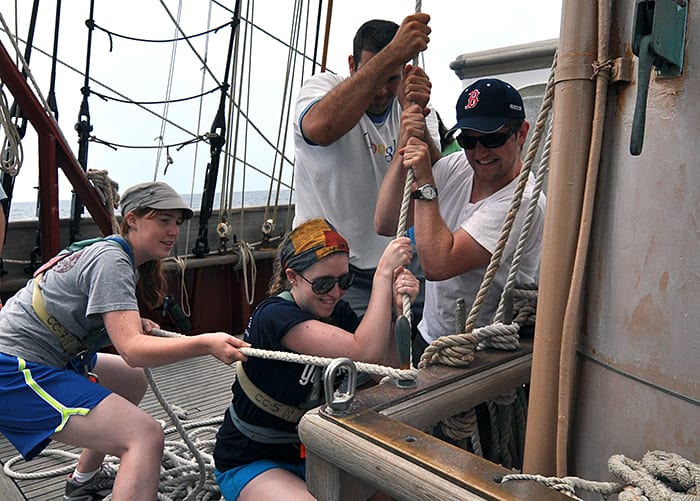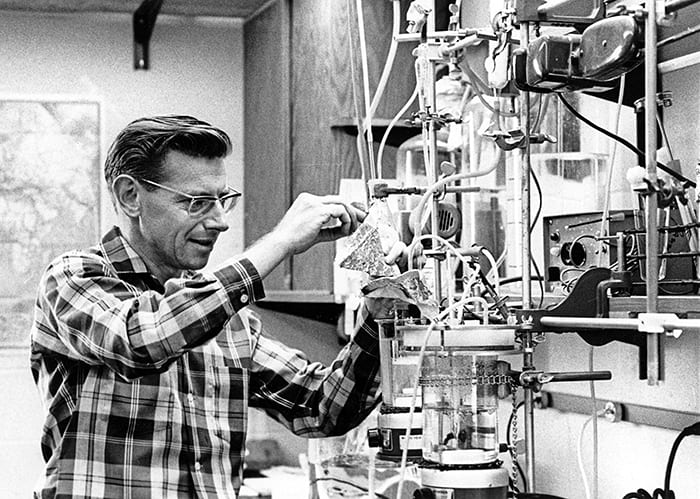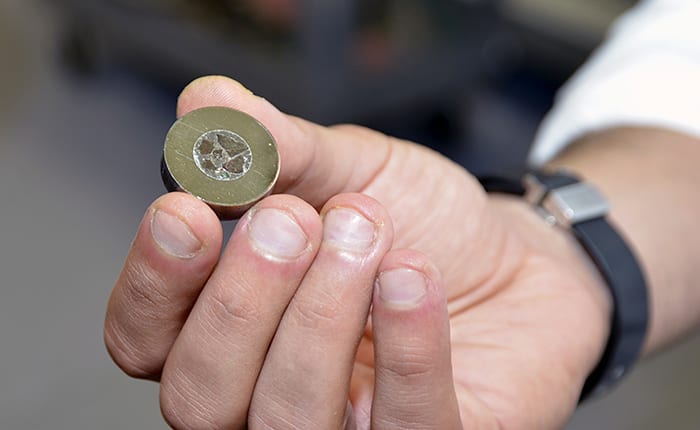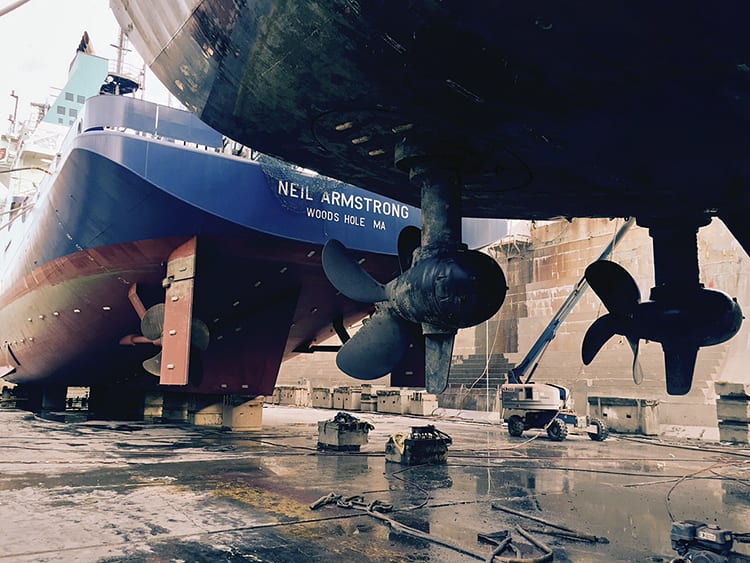Multimedia Items
A Cut Above
WHOI machinist Timothy Kling cuts titanium into a component for the frame of the upgraded Alvin, the nation’s deep-diving human-occupied research submersible. He is using a water jet, which directs…
Read MoreRaking it In
A clam rake is the instrument of choice for MIT-WHOI joint program student Megan May as she hunts for clams at Little Island Beach in Falmouth. May is using genetic…
Read MoreCurrent Monitor
MIT-WHOI Joint Program student Isabela Le Bras stands in front of a flotation sphere on R/V Knorr in the North Atlantic. The sphere keeps a mooring, a string of instruments…
Read MoreGliding Away
WHOI scientist Al Plueddemann (center) and engineers Aidan Alai (left) and John Lund (right) prepare a glider for deployment. Gliders are autonomous underwater vehicles that moves through the ocean by changing their…
Read MoreWired Right
Derek Bergeron, relief chief mate for R/V Neil Armstrong, helped change wires while testing the main traction winch during the ship’s inaugural voyage from Anacortes, Washington to San Francisco in November. The…
Read MoreTangled Up
Entanglement in fishing gear is the leading cause of death for endangered North Atlantic right whales. When whales become tangled in fishing gear, such as buoys, and lobster and crab…
Read MoreSea Level Link
WHOI research specialist Frank Bahr (left) and physical oceanographer Glen Gawarkiewicz analyze data on currents collected off Cape Hatteras. Gawarkiewicz studies the currents along and across the continental shelf. Gawarkiewicz,…
Read MoreGet On Board
WHOI friends and supporters aboard the R/V Neil Armstrong during the ship’s 2015 inaugural trip, watched as the ship entered the Panama Canal. A part of the U.S. academic research fleet, R/V Neil Armstrong…
Read MoreMooring in the Making
WHOI welder and fabricator Paul Keith assembles a stainless steel cage for an acoustic modem that will be installed on an Ocean Observatories Initiative (OOI) sub-surface flanking mooring in the Argentine…
Read MoreIcy Recovery
John Kemp of the WHOI Mooring Operations, Engineering and Field Support Group is lowered in a crane-operated basket from the Canadian Coast Guard Ship Louis S. St. Laurent in 2015…
Read MoreProfiler Swap
Biofouling can be a serious problem for oceanographic equipment that spends any amount of time at the surface or in the upper ocean and was one of the reasons this…
Read MoreMicrobe ID
The ocean has two kinds of microbes: Autotrophs use sunlight to convert carbon dioxide into organic carbon, while heterotrophs convert organic carbon such as glucose into nutrients. Scientists are developing new tools…
Read MoreFirst in Line
A work crew fits the boom to R/V Atlantis‘ new mizzen mast in this undated photograph from the Munro Shipyard in Chelsea, Mass. Atlantis was the first ship operated by…
Read MoreBuilt Right
Tony Delane, WHOI welder and fabricator, assembles the lower frame of a coastal surface mooring. The WHOI Mechanical Shop routinely designs and assembles the platforms and instruments that must weather…
Read MoreArctic House Call
Crewmember Daryl Tobin from the Canadian icebreaker Louis S. St. Laurent secures a line on a mooring that had been tethered to the seafloor in the Arctic Ocean. The instrument…
Read MoreDry Dive
Pilot Jefferson Grau discusses the submersible Alvin’s systems and capabilities with professor Diane Adams, of Rutgers University (left) and Professor Jen Glass of Georgia Tech (right). Alvin was in Woods…
Read MoreDown the River
During monsoons, the Ganges and Brahmaputra Rivers export 50 metric tons of carbon-containing sediments per day into the Bay of Bengal. WHOI scientists study rivers around the world to analyze…
Read MoreTrieste Leads the Way
Fifty-six years ago today, Jacques Piccard and Lt. Don Walsh made history by diving inside the U.S. Navy bathyscaphe Trieste to the deepest known spot in the ocean, the Challenger…
Read MoreR/V Neil Armstrong: Panama Canal
On November 23, 2015, R/V Neil Armstrong entered the Panama Canal through the Miraflores Locks on its way from the Pacific to the Atlantic and eventually to the U.S. East…
Read MoreR/V Neil Armstrong Entering San Francisco
On November 7, 2015, R/V Neil Armstrong completed its inaugural voyage, sailing into San Francisco Harbor on a sunny Saturday morning.
Read MoreScience Under Sail
Students in the MIT-WHOI Joint Program in Oceanography and Roman Shor (second from right) of the Sea Education Association (SEA) aboard SEA’s research vessel Corwith Cramer raised a sail during the 2011 Jake…
Read MoreAdventures in Science
“Science is an adventure, not a career,” WHOI microbiologist Holger Jannasch (1927-1998) once said. Equally at home in the lab or at sea, Jannasch is remembered for making seminal discoveries…
Read MoreOuter Space to Inner Space
WHOI scientists are known for the fact that many of them address some of the most immediate and pressing questions of our time. MIT-WHOI graduate student Adam Sarafian, however, is…
Read MoreShips Out of Water
Two vessels in the U.S. academic research fleet, Atlantis (foreground) and Neil Armstrong, rest stern-to-stern in dry dock in Charleston, S.C. The two ships, both operated by WHOI, were hauled out…
Read More
